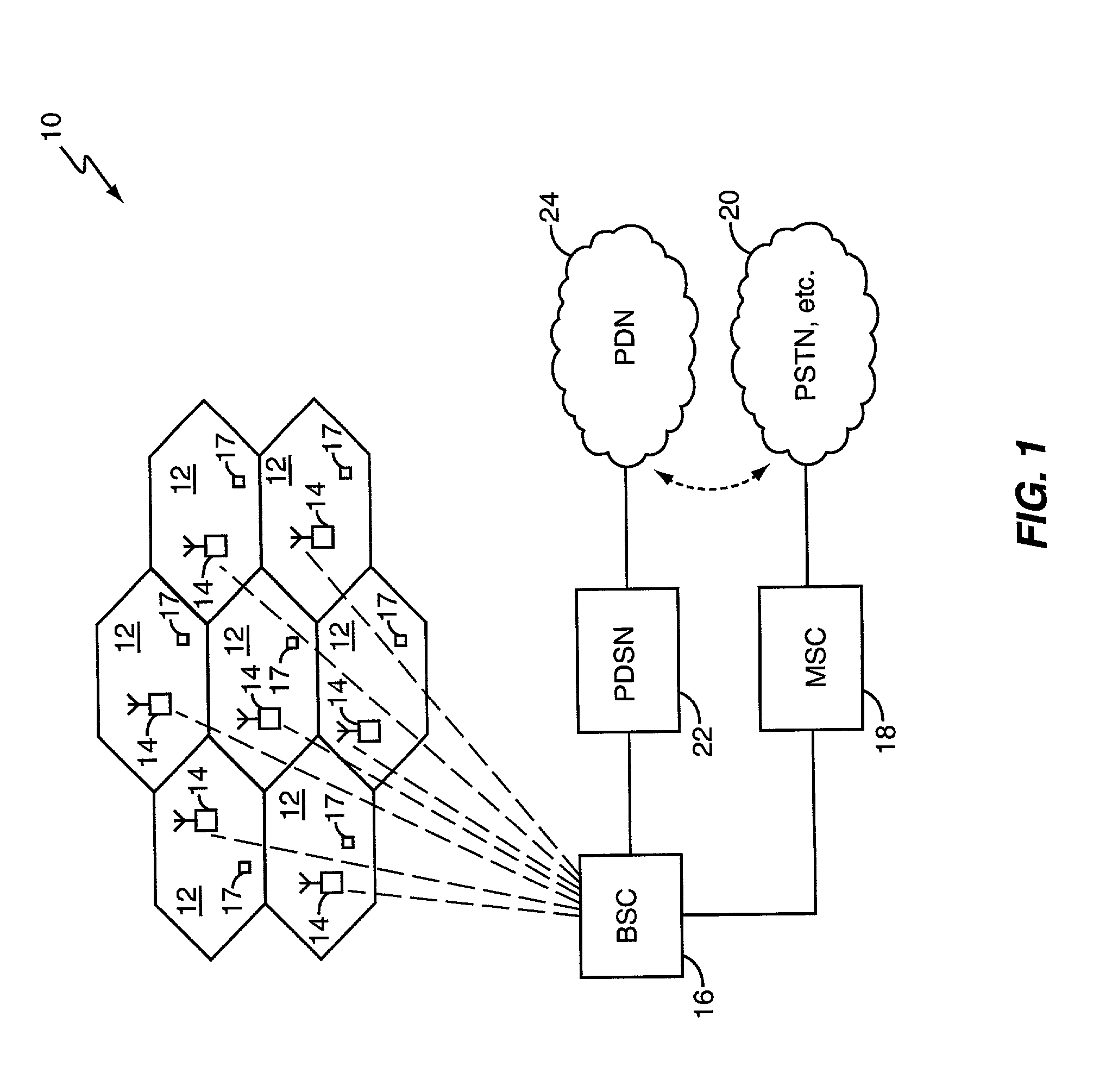Fast flow control methods for communication networks
- Summary
- Abstract
- Description
- Claims
- Application Information
AI Technical Summary
Benefits of technology
Problems solved by technology
Method used
Image
Examples
Embodiment Construction
[0017]FIG. 1 illustrates a simplified wireless communication access network generally referred to by the numeral 10, and which may be, for example, a high rate packet data network configured in accordance with the TIA / EIA / IS-856 standard. While this specific air interface standard provides a directly relevant context for discussing the invention, it should be understood that at least some aspects of the present invention have applicability beyond this standard.
[0018]Network 10 as illustrated comprises a plurality of sectors 12, each served by a radio base station (RBS) 14, a base station controller (BSC) 14 supporting the RBSs 12, a mobile switching center (MSC) 18 interfacing the network 10 to one or more external networks 20, and a packet data service node (PDSN) 22 interfacing the network 10 to one or more packet data networks 24. Examples of networks 20 and 24 include but are not limited to the Public Switched Telephone Network (PSTN) and the Internet, respectively.
[0019]Typical...
PUM
 Login to View More
Login to View More Abstract
Description
Claims
Application Information
 Login to View More
Login to View More - R&D
- Intellectual Property
- Life Sciences
- Materials
- Tech Scout
- Unparalleled Data Quality
- Higher Quality Content
- 60% Fewer Hallucinations
Browse by: Latest US Patents, China's latest patents, Technical Efficacy Thesaurus, Application Domain, Technology Topic, Popular Technical Reports.
© 2025 PatSnap. All rights reserved.Legal|Privacy policy|Modern Slavery Act Transparency Statement|Sitemap|About US| Contact US: help@patsnap.com



